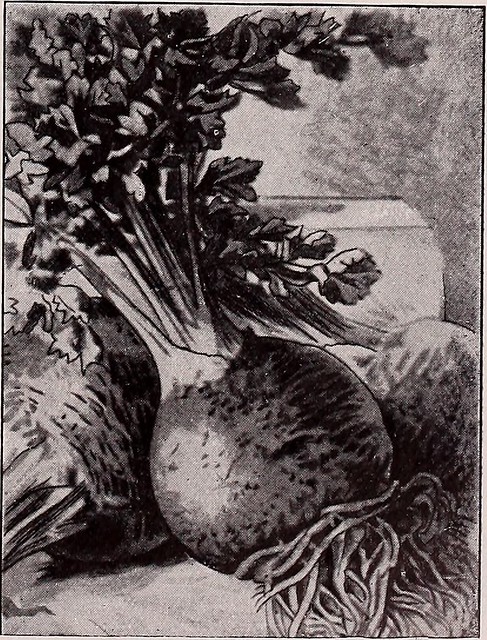Sweetroot
Write about an important plant in your world and what it is used for.
The sweetroot has been grown in the central lands of the Marivan Empire for many centuries but until covey recently was not a major food crop - it was grown for animal fodder and food use when other crops failed. The “problem” was the presence of a toxin which caused progressive problems with the nervous system resulting in Rootsickness . This was slow enough in onset not to be an issue with its use as animal fodder, at least for non-breeding stock, but a serious problem with its use as a staple.
The first step forward came with the discovery that fermentation removed this toxin, and coincidentally resulted in a pleasantly inebriation drink - rootale. More useful was the later discovery (popularised and publicised, if not actually discovered by Hieron Nollerute) of the use of green clay to detoxify it allowing the juice to be refined for fine cookery (the fermentation consumed most if not all of the sugars). Examples of these culinary uses can be found in the The Kitchen's Book of Larch Hill .
To detoxify the juice or liquid extract a handful of the clay is added to each quarter cask of the liquid and kept suspended by periodic agitation over a day and a night before allowing to settle and then decanting off the liquid for onward processing. Detoxifying the solid is more involved and sees the root cut into thin slices which are packed in a thin slurry of the clay and held for up to a week before washing. This is a difficult technique to master but for higher status used is preferred to the peasant technique of drinking a slurry of the clay when eating the root (from which habit the peasantry of the sweetroot dependant areas are often referred to as mud drinkers).
Basic Information
Anatomy
Above ground the plant is short with large broad leaves. Cultivated varieties are typically around knee high whilst the wild form is normally half to two thirds the height. The root itself, harvested in the turn can be as large as a head, but is typically half this size and, in the wild varieties, is normally fist sized.
Genetics and Reproduction
Like many flowering plants, the sweetroot is pollinated by insects. The flowers only form in the plant’s second spring so there is a decision to be made by any cultivator of how much to harvest for food and how much to grow on for seed., and these give rise to yellow berries containing the seed, which are scattered far and wide by birds with the Redwing being particularly known for it fondness for these berries.
Growth Rate & Stages
Given a sufficiency of water the plant will germinate rapidly and over the course of 2 months grow to full height. It then enters a period of building reserves, stored as the root, for the remainder of the year. In the early spring of its second year it puts forth flowers with the berries maturing in the late summer. Producing these berries consumes much of the sweetroot’s reserves, causing the tuber to shrink by two thirds or more. It can, under ideal conditions repeat the flowering cycle for as many as five years before the plant dies.
Ecology and Habitats
The wild variety is typically found in sheltered areas such as the margins of woodland, with plentiful water. When cultivated is tends to require some degree of irrigation.
Additional Information
Domestication
Domestication of the sweetroot began many centuries ago sand the plant has long been seen as an emergency reserve and animal fodder. More recently as the levels of the plant’s toxin have reduced and techniques for removing it improved the plant has become a staple food source for large parts of the Marivan Empire.
Symbiotic and Parasitic organisms
The Redwing plays a large part in the distribution of the seeds of the wild plant and is a significant pest for seed producers. There is room for debate on whether the farmers are symbiotic or parasitic as far as the root is concerned.
Conservation Status
The wild strain of the sweetroot is now quite limited in range, being only found in the Nash-din and the plain between these hills and the Long Range. The cultivated varieties are common in the central plains of the continent and the valley of the Harren-var (though seldom in The Vale of Arabour). Though cultivated in other parts of Marivar it is less widely found. Cultivated varieties have begun to diverge from the wild stock as farmers sought larger roots with lower levels of toxins.
Image from page 12 of "Beckert's garden, flower and lawn seeds" (1908)




Comments